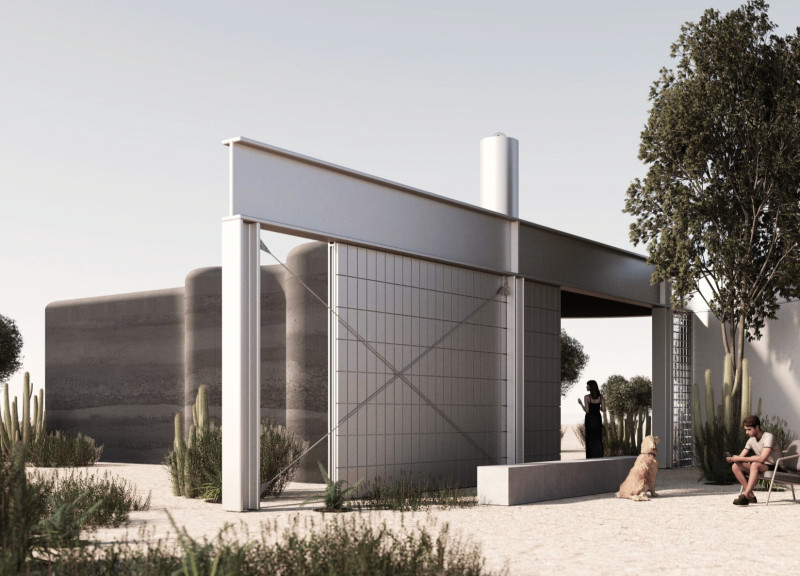5 key facts about this project
The design embodies a harmonious blend of form and function, where aesthetics and utility are expertly interwoven. The building's exterior presents a modern façade characterized by clean lines and a thoughtful selection of materials that harmonize with the surrounding environment. This engagement with context is paramount, as it seeks to create a dialogue between the built and natural surroundings, ensuring that the project feels both inviting and integral to its site.
Materiality plays a vital role in the architectural language of the project. The primary materials utilized include reinforced concrete, steel, and glass, each chosen not only for their structural capabilities but also for their visual, tactile, and sustainable qualities. The use of reinforced concrete offers durability and a robust foundation, while steel elements contribute to the building's safety and strength, all while enabling larger open spaces. The extensive use of glass facilitates natural light ingress, promoting a connection to the exterior and allowing the internal spaces to breathe and evolve throughout the day.
Inside the building, the layout is designed with an emphasis on openness and flexibility. The interior spaces are characterized by high ceilings and open plan design, which not only enhances spatial perception but also encourages sociability among occupants. Strategic placement of communal areas ensures that users can engage with each other and with the activities housed within the project. Additionally, thoughtful incorporation of indoor landscaping elements fosters a sense of tranquility and connection to nature, offering respite within the bustling urban setting.
The project reflects unique design approaches through its commitment to sustainability and energy efficiency. By integrating passive design strategies, such as natural ventilation and daylight harvesting, the building minimizes its environmental impact while maximizing occupant comfort. The roof design incorporates elements like green roofs or solar panels, which contribute to the reduction of energy costs and enhance the ecological footprint of the development. This sustainable ethos is not only a response to current environmental challenges but also showcases a forward-thinking attitude towards the future of urban design.
Another significant aspect of this architectural project is its community engagement strategy. The design process involved consultations with local stakeholders, ensuring that the project was tailored to meet the specific needs and desires of the community it serves. This participatory approach not only reinforces a sense of ownership among users but also enhances the relevance of the building’s functions, thereby fostering a stronger community connection.
Overall, this architectural project emerges as a thoughtful and innovative response to contemporary urban challenges, embodying principles of sustainability and creating spaces that encourage interaction and community cohesion. The balance between aesthetic appeal, functionality, and environmental responsibility establishes a blueprint for future developments within urban contexts. For those interested in exploring this project further, it would be beneficial to examine the detailed architectural plans, sections, designs, and ideas that underpin this thoughtful architectural endeavor. Engaging with these elements provides deeper insights into the decisions made throughout the design process, illustrating how each choice contributes to the overarching vision of the project.


























